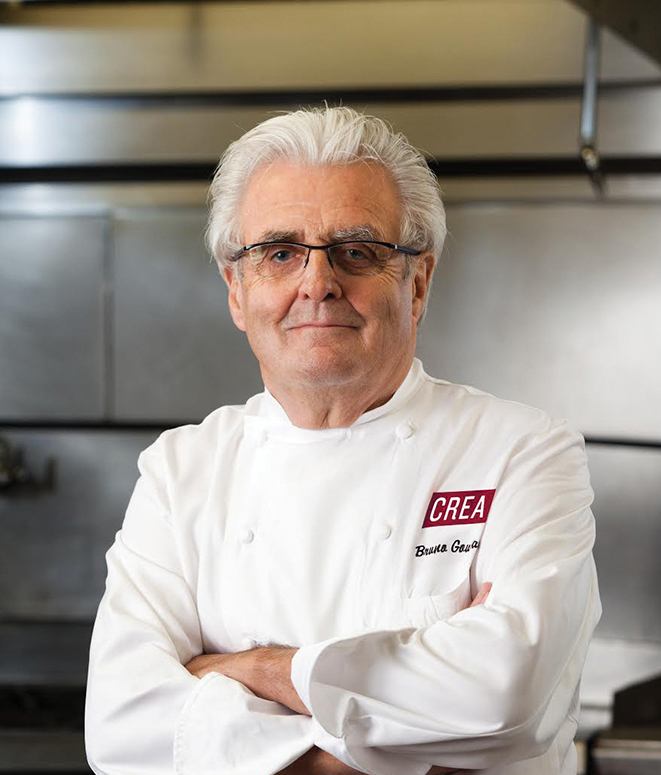What is your No. 1 rule for the lab?
Precision and accuracy. With everything. That translates into cleanliness and attention to detail. I am a scientist, so I look at sous vide in a very scientific way.
Is it safe for home cooks to try to cook sous vide if they don’t have the equipment or training?
When people make a mistake in the process, the result is usually quite awful—and sometimes even unhealthy. It’s important to know what good sous vide tastes and feels like in order to know what you’re doing wrong.
What is the difference between the results you can create with conventional cooking versus a sous vide method?
People love sous vide because of the flavor and the textures it provides. Nothing is leaving the food when you use the sous vide method. All of the flavor is concentrated. Nothing is lost.
Tell us about a food or ingredient that doesn’t actually benefit from sous vide?
All of the green vegetables are very difficult to cook sous vide because of the chlorophyll. Chlorophyll needs oxygen to stay green. When you cook bright green vegetables in a sous vide method, they turn an unappetizing shade of military khaki.
What is the most unusual or surprising food that you’ve tried in the sous vide method?
Watermelon comes to mind. You open a new avenue or a new world—a new texture, a new taste, a new something—and the results you obtain with sous vide are sometimes ones that you have never encountered before.
Also, I love celery root because it transforms into something with the texture of a scallop.
Why do you use precise temperatures?
You need to have the hydrolysis of different elements. You cook to obtain a result. When you work at precise temperatures, you’re addressing things like the color and tenderness as well as the water-holding capacities of the food. When you cook vegetables, like carrots, you can play around with finding just the right temperature and time because sometimes you want the crunch while wanting them to be cooked. This is possible with sous vide.
What cooking style benefits the most from sous vide cooking?
Many types of cuisine can be prepared very well with the method. From traditional French to Mexican, it can all be made better with sous vide.
Have a question for the master? Email askthemaster@lecrea.com. This article originally appeared in Sous-Vide magazine’s Spring/Summer 2016 issue. Read the complete print archive here.
Related Articles VIEW ALL ARTICLES
Chefs & Personalities
Ask the Master: Bruno Goussault on Plastics, Cooling, and more.
Cuisine Solutions’ Chief Scientist Dr. Bruno Goussault discusses safe sous vide plastics, keeping your circulator residue-free, and more.
Read More >Chefs & Personalities
Ask the Master: Bruno Goussault on the Future of Sous Vide Technology
Cuisine Solutions’ Chief Scientist, Dr. Bruno Goussault, discusses proper circulation, high-pressure pasteurization, and more.
Read More >Innovations
Cryoconcentration Ups the Flavor Game
Cryoconcentration—reducing by freezing—is an exciting new frontier in food science that opens up a whole new world of flavors.
Read More >
